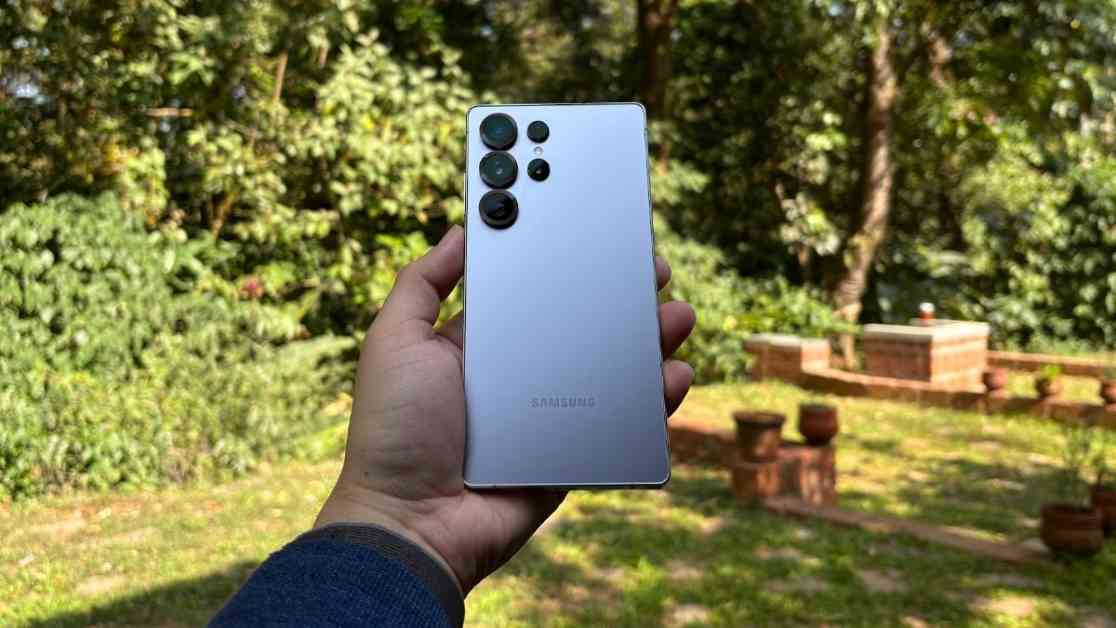Samsung Galaxy S25 Ultra: A Closer Look at the AI-Powered Flagship
Samsung’s latest flagship smartphone, the Galaxy S25 Ultra, has hit the market with a strong emphasis on artificial intelligence features. While the device retains its position as Samsung’s most powerful flagship, the updates this year seem to focus more on software refinements rather than revolutionary hardware advancements. For those who have been using the Ultra series for the past few years, the AI-centric approach might not be compelling enough to warrant an immediate upgrade.
Design: Lighter, Squarer, and Still Slippery
One of the most noticeable changes in the Galaxy S25 Ultra is its weight reduction, shedding about 15 grams compared to its predecessor. This slight adjustment makes the phone more comfortable to hold, especially during prolonged use. The adoption of flatter edges gives the device a more contemporary look that aligns with Samsung’s foldable design language. However, the titanium back remains slippery, making it prone to sliding on surfaces without a protective case.
The redesigned S Pen, now slimmer but lacking Bluetooth connectivity, offers a mixed bag of improvements. While the removal of air gestures may disappoint some users, the reality is that few people utilized this feature extensively. The stylus remains excellent for note-taking and sketching, although it may feel slightly less versatile than before.
The device’s signature Dynamic AMOLED 2X display continues to impress with its 6.9-inch size, Quad HD+ resolution, vibrant colors, and a peak brightness of 2,600 nits. The introduction of Gorilla Glass Armor 2 provides additional durability, ensuring that the phone remains scratch-free even after a week of casual use without a screen protector.
However, the absence of magnetic wireless charging is a notable drawback. While Qi2 compatibility is present, it requires the use of compatible cases, failing to fully embrace the convenience of Apple’s MagSafe ecosystem, which has become a standard in the premium smartphone market.
Camera: Familiar Setup with Incremental Tweaks
The camera system on the Galaxy S25 Ultra closely mirrors its predecessor, with the primary change being the inclusion of a 50MP ultrawide sensor, replacing the previous 12MP variant. This enhancement results in sharper, more detailed ultrawide shots, particularly in landscape and architectural photography.
The 200MP primary camera continues to deliver strong detail retention and satisfactory low-light performance. The telephoto setup now includes a 50MP 5x zoom and a 10MP 3x zoom, with Samsung touting improved algorithms for clearer images at higher zoom levels. However, real-world usage suggests minimal differences between this year’s 10x zoom shots and those from the previous model.
Samsung’s camera processing leans towards vibrant colors and deep contrast, occasionally sacrificing natural image tones. In comparison to Google’s Pixel 9 Pro, which aims for a more balanced and neutral look, the S25 Ultra produces images with richer reds and blues that some users may find overly saturated.
In terms of video capabilities, the S25 Ultra supports 4K recording at up to 120fps, distinguishing it from its counterparts. While 8K recording is still an option, it is capped at 30fps. The addition of Log video mode enhances post-production flexibility, positioning the device closer to professional-grade video recording.
One standout AI feature is Samsung’s Audio Eraser, which effectively filters out background noise in videos. While it performs well in casual settings, it struggles in noisier environments, akin to Google’s Magic Audio Eraser feature.
Performance: AI Integration for Enhanced User Experience
Powered by the Snapdragon 8 Elite for Galaxy chipset and equipped with 12GB of RAM, the Galaxy S25 Ultra promises seamless performance and effortless multitasking. However, the key highlight lies in the device’s AI capabilities.
Samsung’s Personal Data Engine, with its predictive insights like Now Brief, intends to streamline user experiences by delivering daily schedule summaries and notifications. While innovative, this feature may seem redundant for users already adept at managing their digital routines independently.
AI Select, Samsung’s answer to Google’s Circle to Search, enables users to highlight text or images for quick actions such as translation or shopping recommendations. While functional, this feature may not be groundbreaking, especially considering Google’s similar native tools.
With a 5,000mAh battery capacity, the Galaxy S25 Ultra ensures all-day usage with efficiency improvements from the Snapdragon 8 Elite chipset. While battery longevity benefits from these enhancements, the real-world gains are moderate, offering around 24 hours of usage on a full charge, in line with the previous model.
Verdict: Is It Worth the Upgrade?
For current users of the Galaxy S24 Ultra or even the S23 Ultra, the Galaxy S25 Ultra may not present compelling reasons for an immediate upgrade. While the weight reduction, improved ultrawide sensor, and AI features offer convenience, they do not fundamentally alter the device’s performance.
On the other hand, for individuals transitioning from older devices or other brands, the Galaxy S25 Ultra stands out as one of the most potent Android flagship smartphones available. Despite minimal hardware enhancements and a strong focus on AI integration, Samsung’s latest offering seems more like an iterative update than a significant leap forward.
Priced at ₹1,29,999 for the 512GB/12GB variant, potential buyers may find it prudent to wait for a more substantial upgrade unless an attractive trade-in deal is available. This pause could allow Samsung to deliver advancements beyond AI enhancements, catering to a wider range of consumer expectations.























